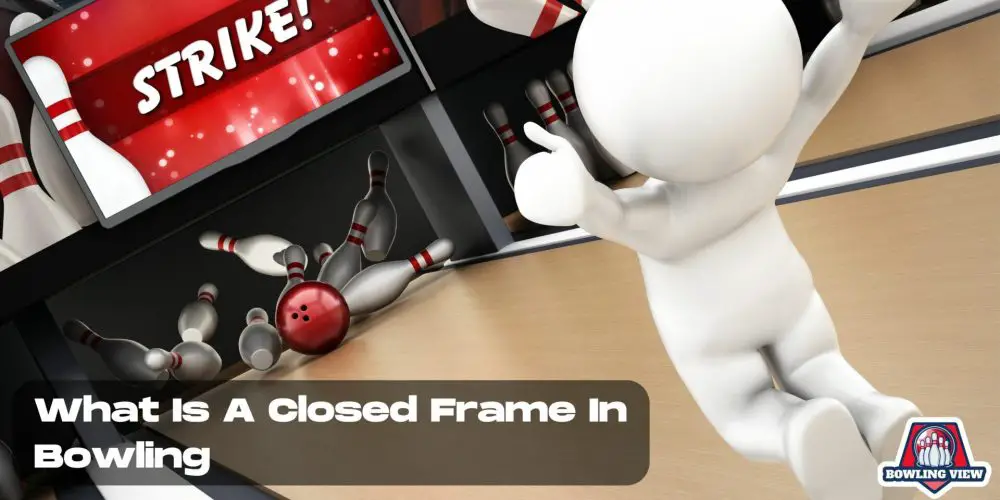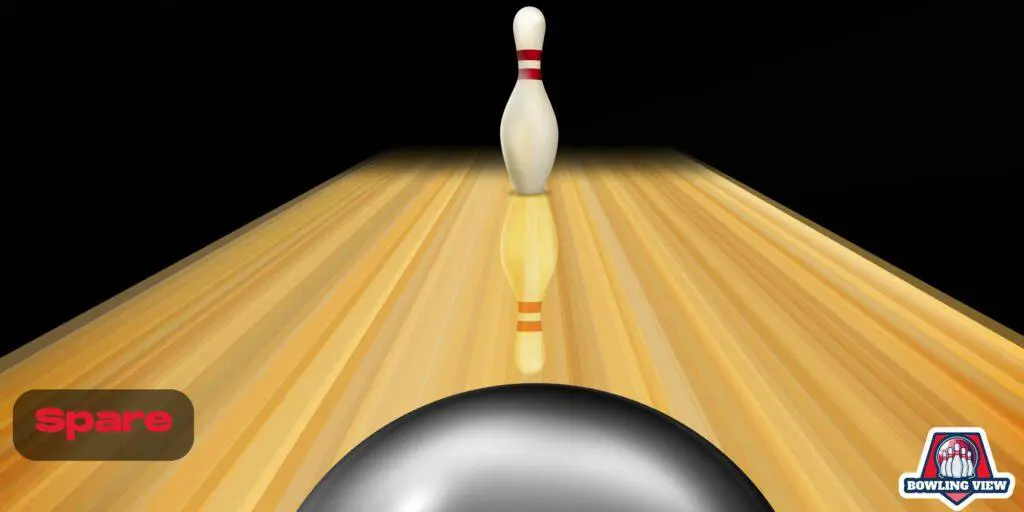In the world of bowling, there are various terms and strategies that contribute to a player’s overall score. One such term is a closed frame. Understanding the concept of a closed frame is crucial for both novice and experienced bowlers to enhance their game and improve their scores.
A closed frame in bowling is when a player either achieves a spare – knocking down all 10 pins with two attempts – or a strike – knocking down all 10 pins with the first attempt. This is important for bowlers because closed frames maximize their scoring potential within each frame by adding bonus points from the subsequent shots.
While open frames occur when a bowler does not knock down all 10 pins after their two attempts, closed frames are the ideal outcome, showcasing a player’s skill and helping to achieve higher scores. As bowlers seek to continually improve their performance, aiming for more closed frames can significantly contribute to a winning strategy.
Understanding Closed Frame in Bowling
Closed Frame Vs. Open Frame
In the sport of bowling, there are two types of frames: closed and open. A closed frame occurs when a bowler knocks down all ten pins within a single frame, either by achieving a strike or a spare. On the other hand, an open frame refers to a situation where a bowler fails to knock down all the pins in the frame, leaving some standing after both attempts.
Strike and Spare Basics
A strike happens when a bowler knocks down all 10 pins with their first roll in a frame. This is signified by an “X” on the score sheet.
A spare is accomplished when a bowler knocks down all remaining pins on the second roll of a frame, after leaving some standing pins on the first roll.
In this case, a “/” symbol represents a spare on the score sheet.
Understanding the difference between a closed and open frame is crucial for maximizing one’s scoring potential in a game of bowling, as well as for comprehending the scoring system itself.
Scoring a Closed Frame
The way a closed frame is scored depends on whether it is a strike or a spare. Here’s how each closed frame is scored:
- Strike: When a bowler achieves a strike, the frame’s score is determined by adding the 10 pins from the strike, plus the total number of pins knocked down on the bowler’s next two rolls. This means that a strike is not only worth 10 points, but also serves as a multiplier for the subsequent frame’s results.
- Spare: When a bowler completes a spare, the frame’s score is determined by adding the 10 pins from the spare, as well as the number of pins knocked down on the bowler’s next roll. Like a strike, scoring a spare adds bonus points based on the following frame’s performance.
In summary, closed frames are highly valuable in the game of bowling as they contribute to a higher score through bonus points. To master the sport, understanding and consistently achieving closed frames, whether through strikes or spares, is essential.
Bowling Technique and Strategy
Grip and Stance
The grip and stance are fundamental aspects of the bowling technique. The grip involves having a relaxed, slightly cupped hand and positioning the fingers and thumb so that they fit comfortably into the ball’s holes. The stance should be well-balanced, with the dominant foot slightly forward, and knees slightly bent.
Approach and Armswing
The approach consists of a series of steps (usually four or five) that lead up to the release of the ball. Keeping a consistent pace and rhythm is crucial, enabling a free-flowing armswing. The armswing itself relies on the weight of the ball pulling the arm down and through a pendulum-like motion, resulting in an efficient delivery.
Spin
Spin is an important element in creating movement on the lane. The bowler can achieve spin by generating finger rotation during the release. Spin can lead to increased hook potential, which helps the bowler navigate challenging lane conditions effectively.
Slow Ball
Bowlers may sometimes employ a slow ball to generate more hook, negotiate difficult lane conditions, or target specific pin combinations. A slower ball is achieved by reducing arm speed and using a more relaxed wrist during release.
Fast Ball
Alternatively, a fast ball can be useful when power is required for a strike or when the lane conditions are more favorable for a tighter ball reaction. A fast ball can be executed by increasing arm speed and utilizing a firmer wrist snap upon release.
Adjustment And Lane Condition
Bowlers must constantly adjust their techniques according to the varying lane conditions – such as oil patterns, lane materials, and overall friction. Experienced players recognize the need to adapt their aim, speed, and delivery angle to maximize their chances of success.
Achieving Strikes and Spares
Targeting and Cluster Management
In bowling, a crucial aspect of scoring strikes and spares is proper targeting and cluster management. It is essential to aim for the right target on the lane, usually focusing on the arrows near the foul line. These arrows help bowlers direct their shots towards the desired pins or cluster.
Managing the pin cluster is another vital aspect of effectively scoring strikes and spares. For a strike, aiming between the 1st and 3rd pins (for right-hander bowlers) or 1st and 2nd pins (for left-handers) can increase the chances of knocking down all ten pins. For a spare, it is important to target the remaining pins to clear them in one shot.
Following Through and Entry Angle
A proper follow-through helps bowlers maintain consistency and accuracy. Ensuring a smooth and fluid release of the bowling ball with an appropriate follow through is vital for achieving strikes and spares. A correct follow through will involve the extension of the arm and wrist in the direction of the target, keeping them in a straight line towards the pins.
The entry angle plays a significant role in determining the success of a shot. Ideally, an entry angle between 4 to 6 degrees is optimal for striking pins effectively. Achieving this angle requires a proper release and trajectory of the ball, which consider factors like ball speed, rotation, and lane conditions. Mastering these aspects can greatly enhance a player’s ability to score higher in the game of bowling.
Advanced Bowling Concepts
Bowling Ball Composition
Bowling balls are composed of two main parts: the coverstock and the weight block. The coverstock is the outer layer of the ball, which has a significant impact on how the ball interacts with the lane surface. A more aggressive coverstock will grip the lane better, while a smoother coverstock will have less friction. The weight block is the inner core of the ball, which affects its overall weight distribution and the potential for hooking or turning.
Types of Rolls and Turns
Understanding the different types of rolls and turns in bowling is essential to mastering the game. Rolls can be classified into three categories:
- Straight roll: The ball travels in a straight line without any hook or turn.
- Hook: The ball starts on a straight path but curves as it approaches the pins.
- Backup: The ball starts to curve in one direction but then changes direction and curves the other way.
The amount of hook or turn can be influenced by the bowler’s release, axis tilt, and the positive axis point. Axis tilt refers to the angle at which the ball rotates around its vertical axis, while the positive axis point represents the point on the ball that is furthest from the bowler’s grip.
Bowling Terms and Language
To effectively discuss advanced bowling concepts, it is essential to understand some key terminology. Below is a list of essential terms:
- Ball return: The mechanism that delivers the ball back to the bowler after each roll.
- Ball spinner: A device used to clean and polish bowling balls.
- Conditioner: A substance applied to the lanes to maintain a consistent surface.
- 300 game: A perfect score in a single game, achieved by rolling 12 consecutive strikes.
In addition to these terms, bowlers should also be familiar with the language used to describe various aspects of their technique and performance, such as the release, approach, and targeting system. Understanding and applying this terminology is crucial for effectively communicating with coaches and other bowlers.
Improving Your Bowling Game
Practice and Conditioning
To improve your bowling game, it’s essential to focus on practice and conditioning. Practicing consistently helps develop muscle memory, which leads to better accuracy and control. Additionally, it’s crucial to maintain proper fitness levels, as strength and flexibility contribute significantly to success on the lanes.
Understanding Scoring Systems
A thorough understanding of scoring systems is key to enhancing your bowling capabilities. The American Bowling Congress and the United States Bowling Congress have established a standardized scoring system to evaluate individual and team performances. This scoring system is based on both open and closed frames, with a perfect score being 300 points. Familiarity with this system will help you to better tailor your approach during gameplay to maximize your bowling score.
Participating in Team Play
Team play is an essential aspect of bowling, offering opportunities for social interaction, networking, and skill development. By participating in team activities, you can learn from more experienced players and benefit from constructive feedback.
Collaborating in team practice sessions can also provide motivation and foster a sense of camaraderie, further enhancing your overall bowling experience.
Another interesting read> How Many Players Are on a Bowling Team?.
Remember that consistency, understanding, and teamwork are crucial components to elevating your bowling skills. As you gain knowledge about the scoring systems, build on your practice and conditioning, and engage in team play, you’ll be well on your way to experiencing significant improvements in your bowling game.



